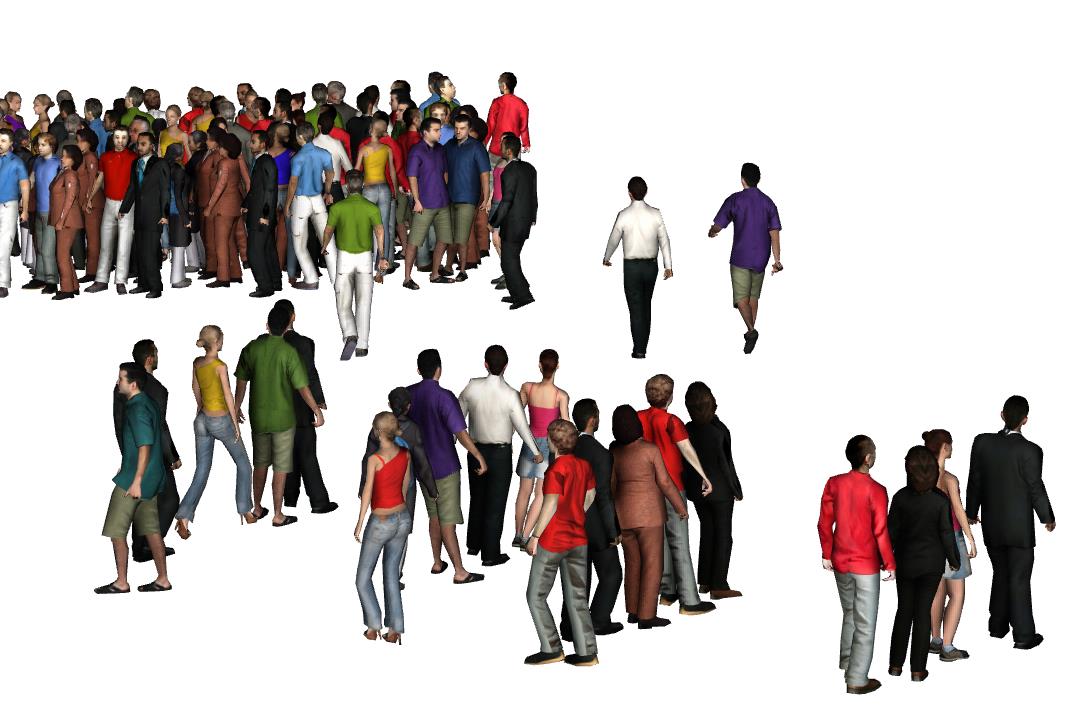Queues in Pathfinder 2021.2
Queues introduce an entirely new concept of occupant movement to Pathfinder which is restricted by pre-determined Paths and waypoints called Services. This will allow users to better simulate behaviors at airports, restaurants, amusement parks, and more.
Simple Queue
Here is an example of a simple queue using a food vendor at a busy city street corner.

This Queue consists of a single Path and two Services. Paths define the multi-nodal arrangement which occupants will occupy. In this example the path has three Nodes so that the queue wraps around the building in the city block. Two nodes will always define the beginning and end of the queue.

The services represent the objectives which the queuing occupants are trying to get to. In this case there are two services to model multiple registers at the food vendor. Once at the service, occupants will wait a predefined amount of time before they complete this step.
Queue definition is drawn in either the 2D or 3D view. Adding queues to an occupant's movement is handled by adding a Behavior Action. The occupants will carry out this Goto Queues action until they have completed the service.
Advanced Queuing
More complex queuing can involve Queue Groups of multiple queues. A Behavior step can target the Queue Group instead of a single queue and the occupants will use some basic logic to determine the best option for themselves. An example might include airport security, where occupants determine which bag check queue to enter. This allows for less scripted movement choices while providing natural movement behavior.

Future queue developments for Pathfinder might include parameters to further customize the occupant behavior within a queue. For instance, distance between occupants in a queue can be modified for cultural preferences or to demonstrate the effects of social distancing in pandemic models. Additionally, some queues may require the occupants to walk through the entire path even while empty if fencing is installed. These are some of our current considerations, and we would like to hear more from you at support@thunderheadeng.com if you have further queue requirements.
Conclusion
We expect to announce queues as part of the 2021.2 release soon. Stay updated by following us on social media or subscribe through the button in the footer of this page to our news emails.